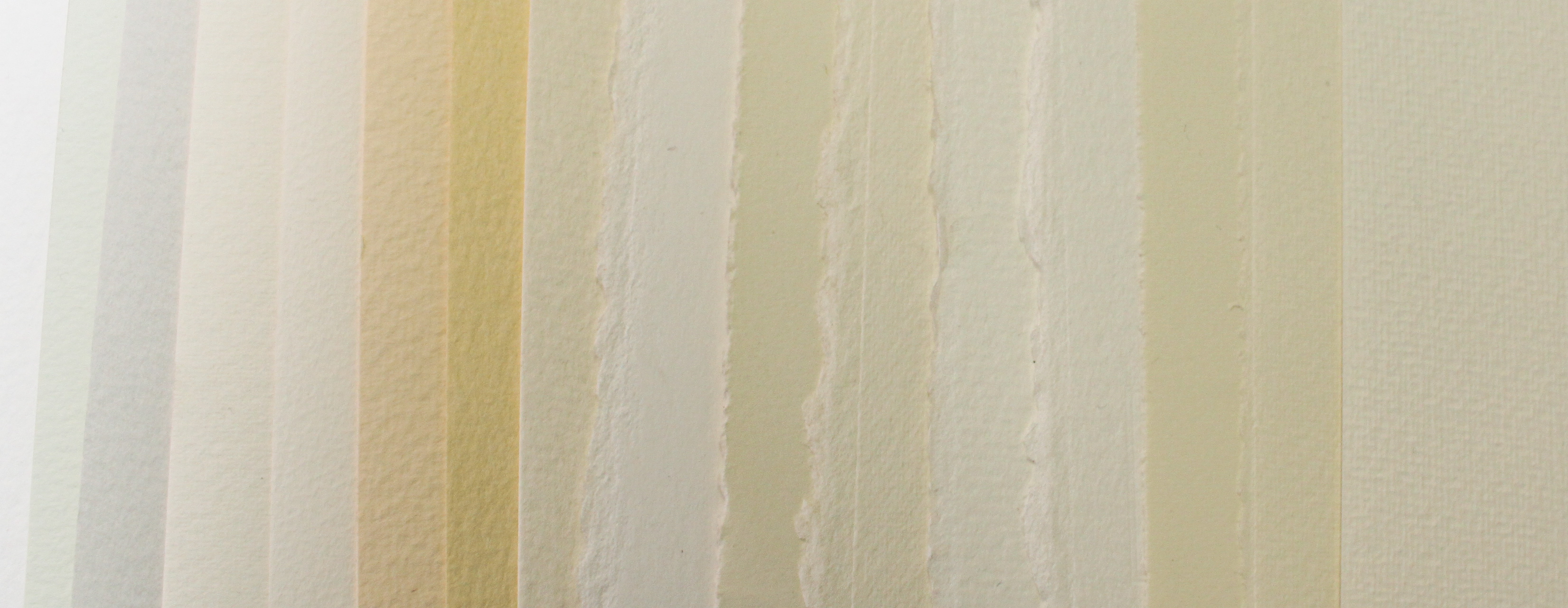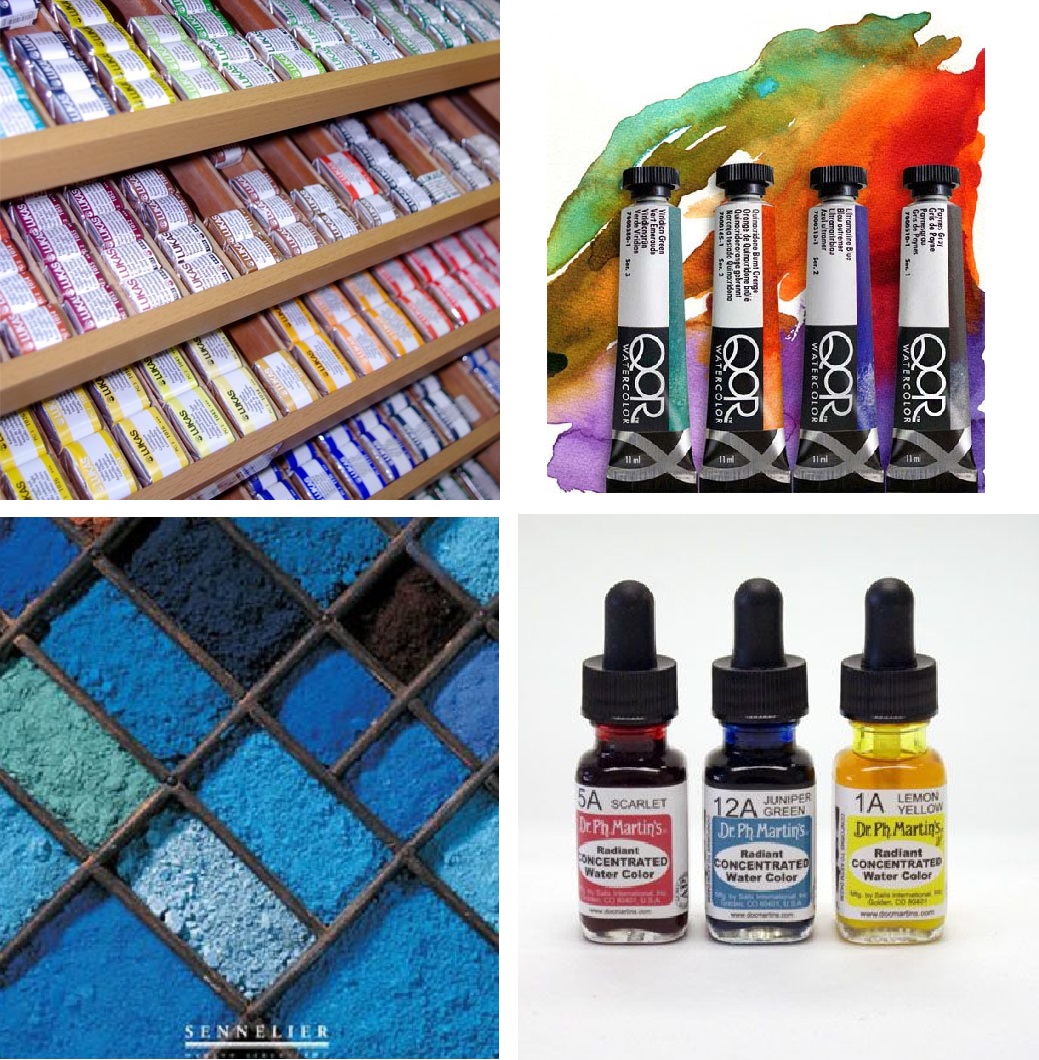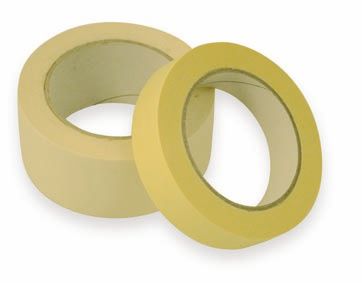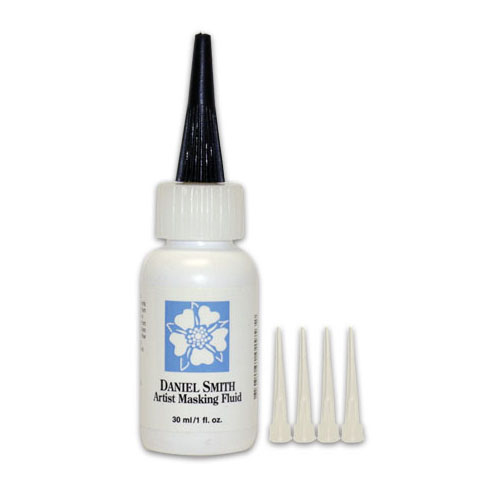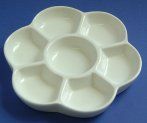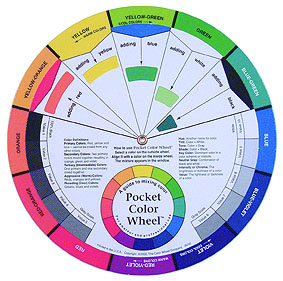Starting Out in Watercolours
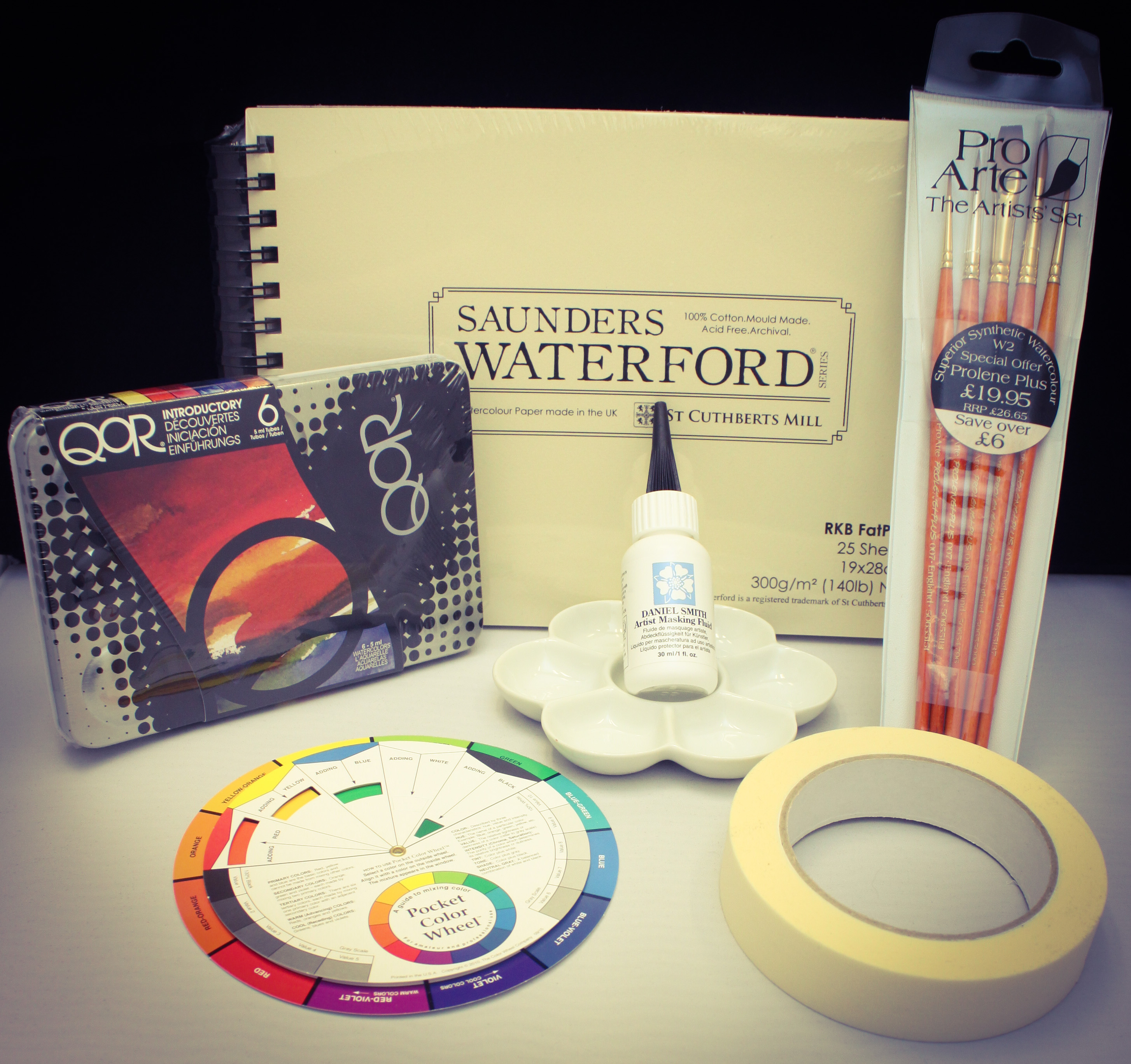 Lawrence's selection of watercolour materials for beginners: Saunders Waterford Fatpad; Golden QOR Intro Set of 6; Pro Arte Prolene Plus Set W2; Daniel Smith Masking Fluid; Daisy Ceramic Mixing Dish; Masking Tape; Pocket Colour Wheel[/caption]
Watercolour painting can seem intimidating for the beginner artist for a number of reasons. First of all, there is the abundance of materials; papers, brushes and paint in different shapes, sizes and quality... And then there's all the technical mumbo-jumbo about opacity and light-fastness... We live in a lucky era of plenitude when it comes to art supplies, but quite frankly it can be the indecisive's nightmare! In this handy beginner's manual, we narrow down the list to the essentials. So sit back and enjoy our step-by-step guide to the wonderful world of watercolour!
Lawrence's selection of watercolour materials for beginners: Saunders Waterford Fatpad; Golden QOR Intro Set of 6; Pro Arte Prolene Plus Set W2; Daniel Smith Masking Fluid; Daisy Ceramic Mixing Dish; Masking Tape; Pocket Colour Wheel[/caption]
Watercolour painting can seem intimidating for the beginner artist for a number of reasons. First of all, there is the abundance of materials; papers, brushes and paint in different shapes, sizes and quality... And then there's all the technical mumbo-jumbo about opacity and light-fastness... We live in a lucky era of plenitude when it comes to art supplies, but quite frankly it can be the indecisive's nightmare! In this handy beginner's manual, we narrow down the list to the essentials. So sit back and enjoy our step-by-step guide to the wonderful world of watercolour!
WATERCOLOUR PAPER
Watercolour paper is generally classified by its colour, weight and texture (among other things). You can generally expect these qualities to be included in the paper's name or description. Here is an example:High White - Saunders Waterford - 300gsm - 760 x 560 - NOT
Colour (or tint) will normally be a shade of white, cream or grey but you can even buy some in purple or black! Traditional watercolour painting uses the white of the paper to shine through the transparency of paint so it is not surprising that most watercolour paper on the market will range between off-white and high-white.
Weight is given in grams per square metre (gsm) and the higher the number the thicker the paper will be. This is one of the most useful information for artists, but not because it is indicative of quality (the same paper may come in light and heavy versions for different purposes). Paper that is 300 gsm or heavier will not need to be stretched; unless working in large size, the paper will keep its shape and won't warp.
Texture can be HP (hot pressed), NOT (cold pressed or not hot pressed) and ROUGH (like cold pressed but grainier). Hot pressed paper has a smooth surface which makes it perfect for illustrations and detailed work. Cold Pressed and Rough papers take watery washes very well and are perfect for landscapes and botanical paintings. We recommend Cold Pressed (NOT) paper for beginners for its versatile surface and classic watercolour look.
[caption id="attachment_572" align="alignleft" width="584"]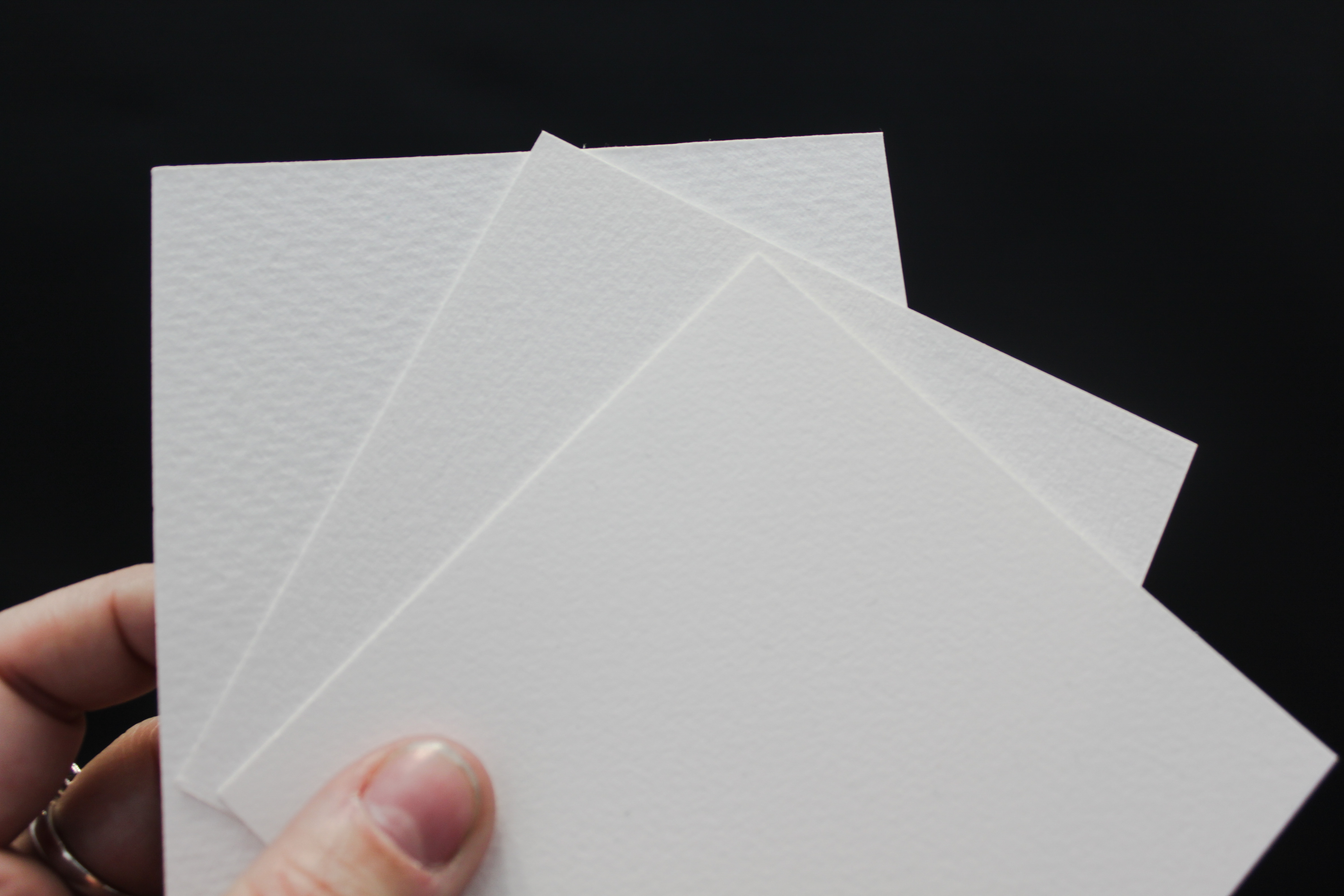 Saunders Waterford Paper samples in ROUGH, NOT and HP (from left to right)[/caption]
Saunders Waterford Paper samples in ROUGH, NOT and HP (from left to right)[/caption]
Paper comes in sheets, quarter sheets and in blocks or pads. Most quality paper comes in pad or block form and they are usually 300 gsm to allow you to work on it without stretching. Glued blocks (held together on three or four sides) mimic stretched paper; when you are finished you can peel off the painting and start afresh. As a beginner you may find that spiral-bound pads like the Saunders Waterford Fatpad suits your learning curve better as they let you keep all your work together and always have the next sheet ready. They usually offer all three (HP, NOT and ROUGH) surfaces and many have colour and size variations.
Lawrence's Tip: if you are not sure what colour, surface or paper weight you need or you would like to try a selection before committing to you favourite, you can always try our Watercolour Sample Pack with 35 of the most popular papers for you to experiment with. Each paper comes in a conveniently compact size and is individually labelled on the back for easy identification.
[caption id="attachment_573" align="aligncenter" width="584"]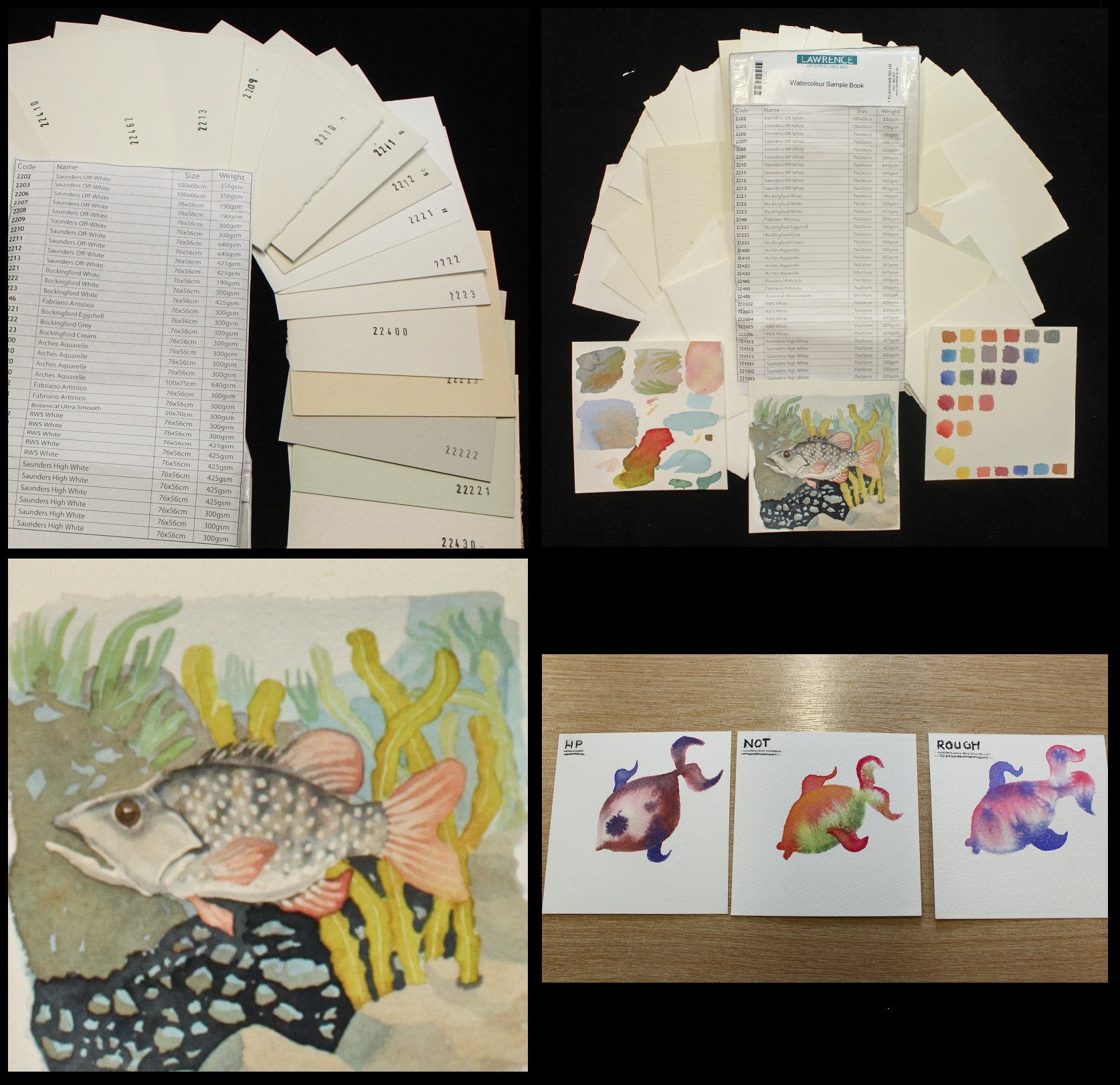 Our Watercolour sample book contains 35 different papers, perfect for testing paint, making colour charts or even for miniatures![/caption]
Our Watercolour sample book contains 35 different papers, perfect for testing paint, making colour charts or even for miniatures![/caption]
WATERCOLOUR PAINT
Watercolour paint comes in tubes, pans or half-pans, as pure pigment and even in liquid form. Tubes and half-pans are the most popular and easy to use and most brands will sell their range in both forms. Whether to buy tubes or pans is an age-old question and it usually boils down to personal preference. Pans are ready to use, whereas you will need a palette for tubes; however, this is not as complicated as it seems. You can set up a permanent palette with squeezing blobs of paint on a waterproof surface. Once it's dry the paint will behave like a pan and you can re-wet your paint when you need it. You can also set up temporary palettes by squeezing a tiny amount onto your surface. This is a great way to keep your otherwise sensitive watercolours clean and dust free and to customise your palette for each painting by only having colours out that you are actually using.
Watercolour paint comes in dozens or sometimes hundreds of shades, but worry not: you will only need a handful to start with. Purists swear by mixing every single shade out of just three primary colours (red, yellow and blue), but we advise buying a starter set with 6 or 12 colours that will have a bigger variety which will make colour mixing a lot easier.
[caption id="attachment_576" align="aligncenter" width="600"]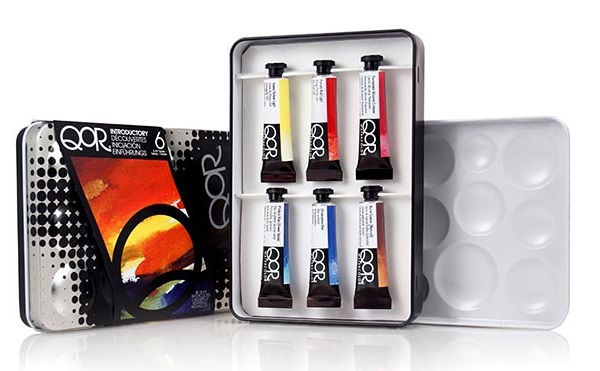 This introductory set by QOR contains a cool yellow, a cool and warm shade of blue and red and a burnt sienna which is an essential colour when it comes to offsetting vibrant colours for nature painting and mixing a beautiful shade of grey with ultramarine blue.[/caption]
[caption id="attachment_578" align="alignright" width="265"]
This introductory set by QOR contains a cool yellow, a cool and warm shade of blue and red and a burnt sienna which is an essential colour when it comes to offsetting vibrant colours for nature painting and mixing a beautiful shade of grey with ultramarine blue.[/caption]
[caption id="attachment_578" align="alignright" width="265"]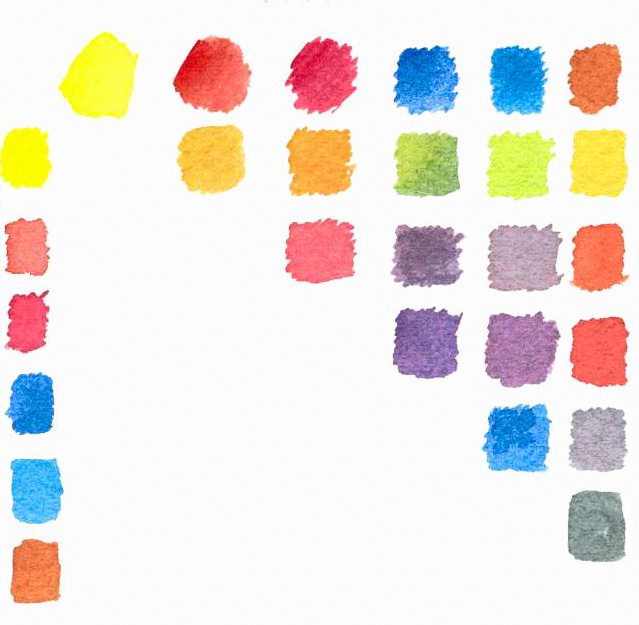 Mixing two colours with the Golden QOR Introductory set[/caption]
If you want to branch out to more than just six colours you can pick a palette that includes greens, grey and brown. Keep in mind that you can easily mix these colours by using two to three basic colours. Quality is better than quantity and this is certainly the case with watercolours; it's preferable to choose a few good quality paints than a larger palette of cheap watercolours. Here is a quick colour chart I made for the QOR introductory set. Even with a limited palette you can mix a good range of colours that will get you started. You can grow your palette when you need more or different shades. Keep in mind, there is no universal list of colours for watercolourists. Botanical painters will have a largely different palette from landscape painters or portrait artists.
Mixing two colours with the Golden QOR Introductory set[/caption]
If you want to branch out to more than just six colours you can pick a palette that includes greens, grey and brown. Keep in mind that you can easily mix these colours by using two to three basic colours. Quality is better than quantity and this is certainly the case with watercolours; it's preferable to choose a few good quality paints than a larger palette of cheap watercolours. Here is a quick colour chart I made for the QOR introductory set. Even with a limited palette you can mix a good range of colours that will get you started. You can grow your palette when you need more or different shades. Keep in mind, there is no universal list of colours for watercolourists. Botanical painters will have a largely different palette from landscape painters or portrait artists.
BRUSHES
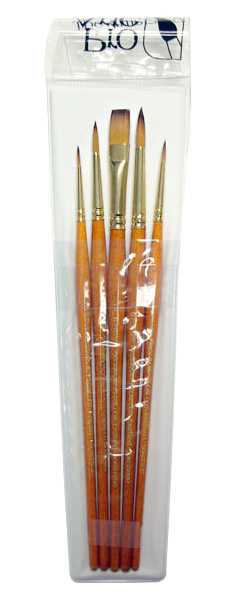 Watercolour brushes fall into two categories: natural and synthetic. Natural brushes are usually made using sable or squirrel hair and they can be on the luxury side compared to synthetic brushes. Nowadays, synthetics are a really good quality alternative to using animal hair, they are just as springy as traditional sable. Synthetic brushes, like this Pro Arte set of 5, retain water and pigments perfectly and they keep their pointy shape for a long time.
Watercolour brushes fall into two categories: natural and synthetic. Natural brushes are usually made using sable or squirrel hair and they can be on the luxury side compared to synthetic brushes. Nowadays, synthetics are a really good quality alternative to using animal hair, they are just as springy as traditional sable. Synthetic brushes, like this Pro Arte set of 5, retain water and pigments perfectly and they keep their pointy shape for a long time.
We suggest beginners start with synthetics because they are economical. All brushes need care - washing, drying and storing them upright after every use - and synthetics are more forgiving when you forget about your routine!
We also advise buying a set with at least 3 different sizes. Round brushes are an all-rounder while flat brushes will be most handy when doing washes.
SUNDRIES
Now that you are set with paper, paint and brushes, there are just a few more items you will need to start painting. Here's a couple of things that might come handy:
Masking tape is used for stretching paper or fixing your loose paper to your paint board. Watercolourists tend to tilt their surface to direct the flow of paint as they choose and this masking tape will also result in a straight framed background.
You can apply masking fluid to block out areas that you want to preserve as white. You can use this Daniel Smith Masking fluid right out of the bottle. Its easy nozzle replaces the need for a brush and great for small details. You can paint over it once it's dry and it is easy to remove your fingertips.
.
You can create a mixing palette out of any shallow waterproof dish, but this Daisy Dish is an all time favourite which lets you mix with ease and create weak solutions for your washes. You can re-wet any dried leftovers in this dish and use it again when you need it.
.
This pocket size colour mixing wheel is a great tool and not just for beginners. It teaches you about mixing colours, relationships and harmonies and it is a very popular aid for watercolourists.
And that completes our list! You are all set to start your journey in watercolours. Share, comment or like this article on our Facebook page for a chance to win one of these Golden QOR Intro Set of 6 trial and sample packs. They contain a sample of six colours: Indian Yellow, Cerulean Blue Chromium, Ultramarine Blue, Pyrrole Red Light, Permanent Alizarin Crimson and Burnt Sienna. Additionally they contain an 11 ml tube of Golden QOR Cobalt Blue! Winners to be announced on the 27th of March!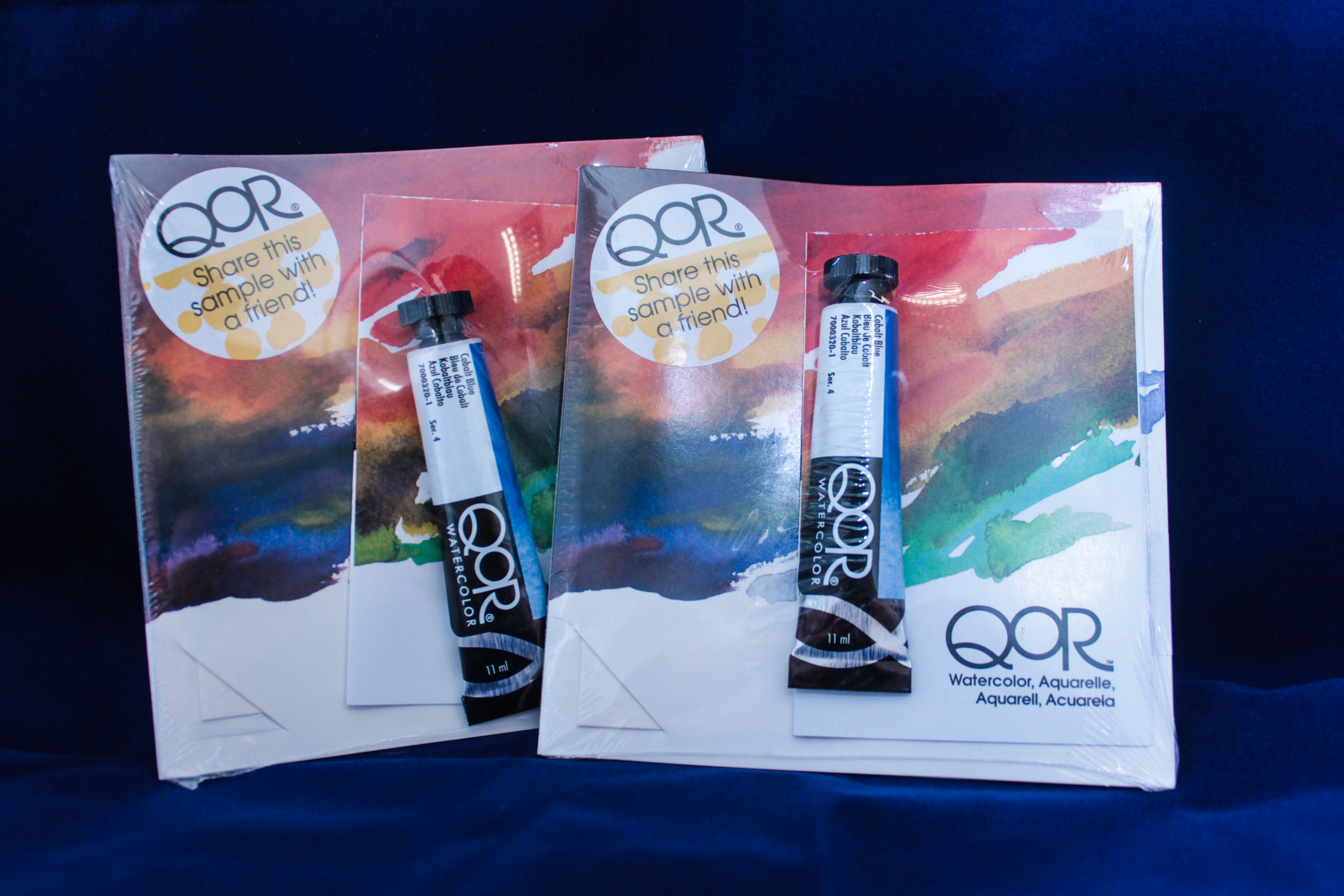 All products mentioned in this article are available to order at www.lawrence.co.uk, in our Hove shop or by calling us on 01273 260260 ext.1.
All products mentioned in this article are available to order at www.lawrence.co.uk, in our Hove shop or by calling us on 01273 260260 ext.1.

